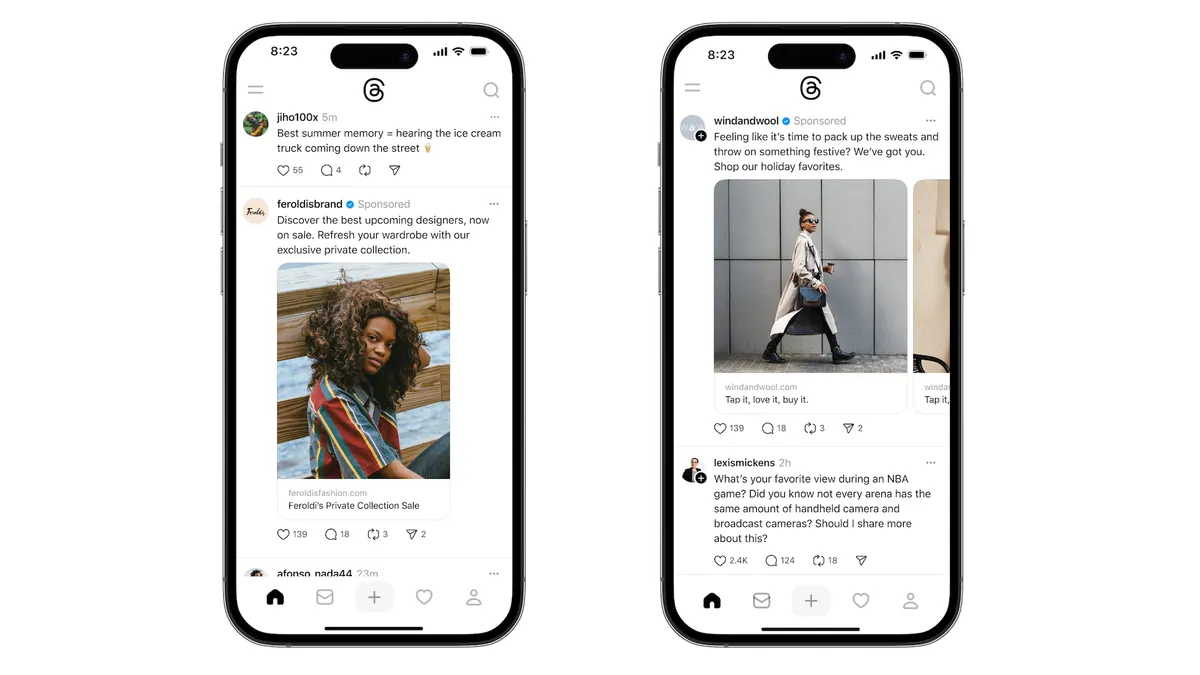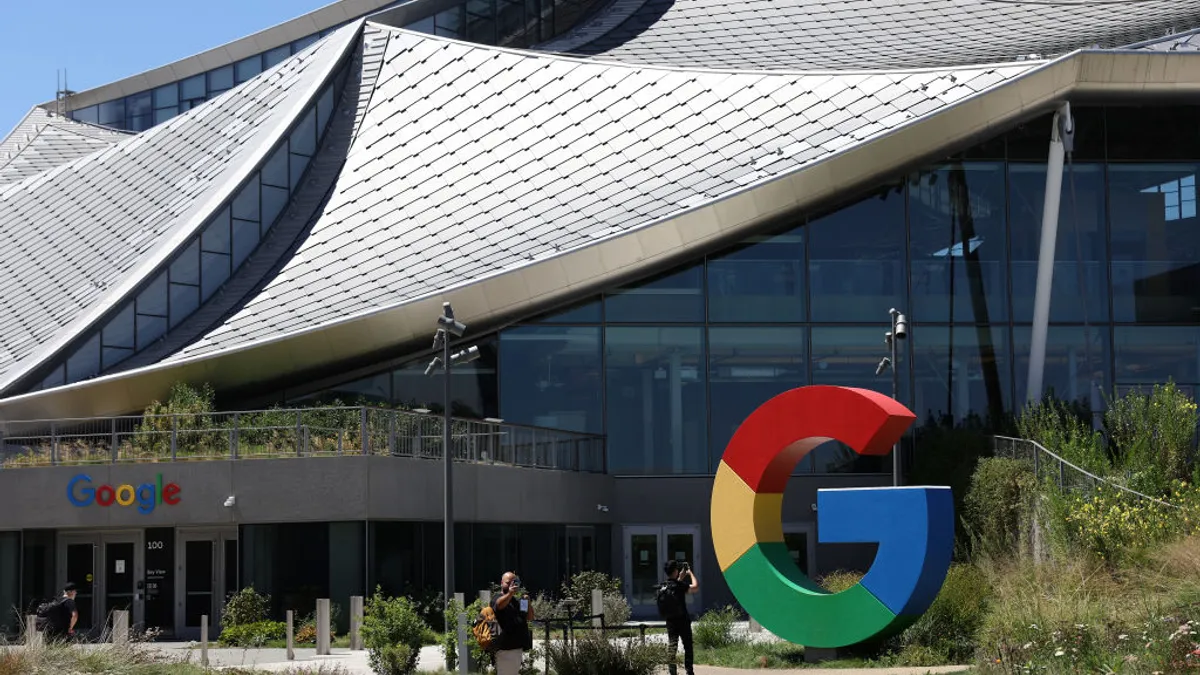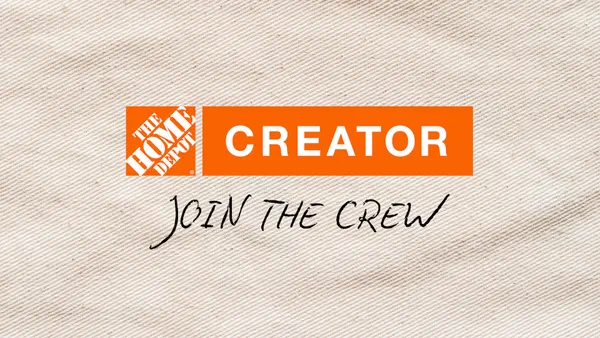Dive Brief:
- Meta today (Sept. 11) announced a suite of product solutions for advertisers, including tools meant to help brands more easily tap into culture, per details shared with Marketing Dive. The solutions were unveiled at the company’s Brand Building Summit.
- Updates include expanded access to Reels trending ads, which use artificial intelligence (AI) to generate the most culturally relevant Reels inventory for brands to place their content near. JCPenney and SharkNinja have already found success with the solution.
- Meta is also adding new ad formats to Threads and simplifying the process for setting up ads on the platform. Additionally, brand advertisers can now use a value rules tool for awareness and engagement objectives to guide Meta’s AI to focus ad delivery on the most relevant audiences.
Dive Insight:
Meta is helping brands tap into the cultural conversation with its latest slate of product solutions. Campaigns on Meta’s platforms are 66% more cost effective at building brands versus an average channel, according to details shared in a company blog post. Many of its new updates center around its strengths in AI, particularly for driving more personalized discovery, continuing what has become a major focus for the tech giant.
Among its updates is expanded access to Reels trending ads to all interested advertisers with a Meta sales rep. Previously, the format was being tested in a limited, closed beta. Reels trending ads leverage AI to help brands place their content alongside the most relevant, trending and brand-safe video content. In early tests, Reels trending ads have driven a 20% boost in unaided awareness, on par with YouTube Select (+20%) and besting TikTok Pulse (+14%), per release details. Available lineups including overall trending content or more niche categories, like animals and pets, beauty and fashion, cars and sports.
In partnership with Dentsu, JCPenney tested Reels trending ads for its “Yes, JCPenney” brand relaunch by placing ads directly after top-trending, creator-generated Reels and ultimately drove a 32% higher ad recall and six-times greater favorability compared to its typical ads. SharkNinja, the household appliance brand, similarly saw success, using Reels trending ads for an influencer campaign that drove 91% incremental reach, over 16 million video views and an 8.2-point lift in ad recall within the span of weeks.
Reels sees 4.5 billion shares daily, making the format a valuable asset for marketers looking to engage with consumers on Meta platforms. Further, over half of time spent on Instagram is spent with Reels, per Meta, and 80% of Gen Z has made a purchase from a business after watching a Reel.
New ad features are also available on Threads, which recently achieved 400 million monthly active users. Included updates are more ad formats, including 4:5 rendering for single image and video ads. Meta is also testing carousel ads and will soon begin testing Advantage+ catalog ads and app ads campaigns. Lastly, brands without a Threads profile can now use their Instagram account for Threads ads, or they can use an existing Instagram or Facebook post to create a Threads in Ads Manager.
Meta additionally is making it easier for brands to signal their different audience priorities within Ads Manager with value rules, which allows advertisers to guide its AI to focus ad delivery on the most relevant audiences. Value rules were previously available only for sales and app campaigns but are now expanding to awareness and engagement objectives. In testing, the tool drove two-times more high-value conversions compared to campaigns without value rules.
In addition, Meta is enhancing its landing page view optimization to support advertisers who aren’t able to leverage the Meta pixel, like a CPG brand driving to a partner site where their products are sold, in an example provided by the company. Those advertisers can now optimize their traffic ads to be shown to audiences most likely to click the ad and load the destination site. Marketers using landing page optimization saw a 31% lower cost per landing page view, diminished bounce rates and increased quality web traffic, per Meta.
Meta Platforms’ revenue increased 22% year over year for a total of $47.52 billion in Q2. The online commerce vertical was the largest contributor to its year-over-year growth in ad revenue, with a major portion of its ad revenue stemming from campaigns using the company’s AI features.













